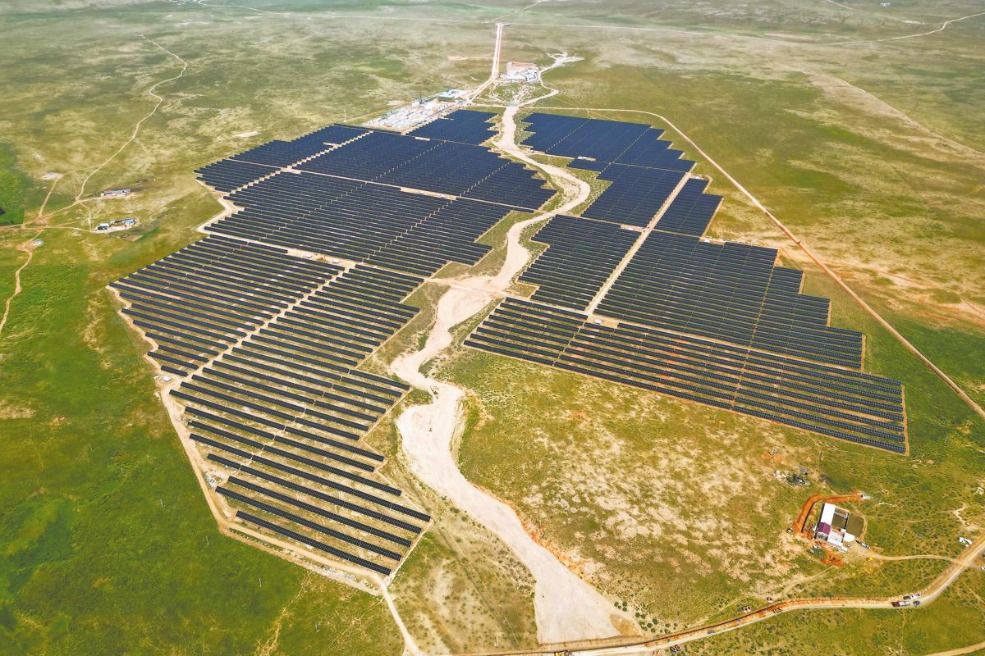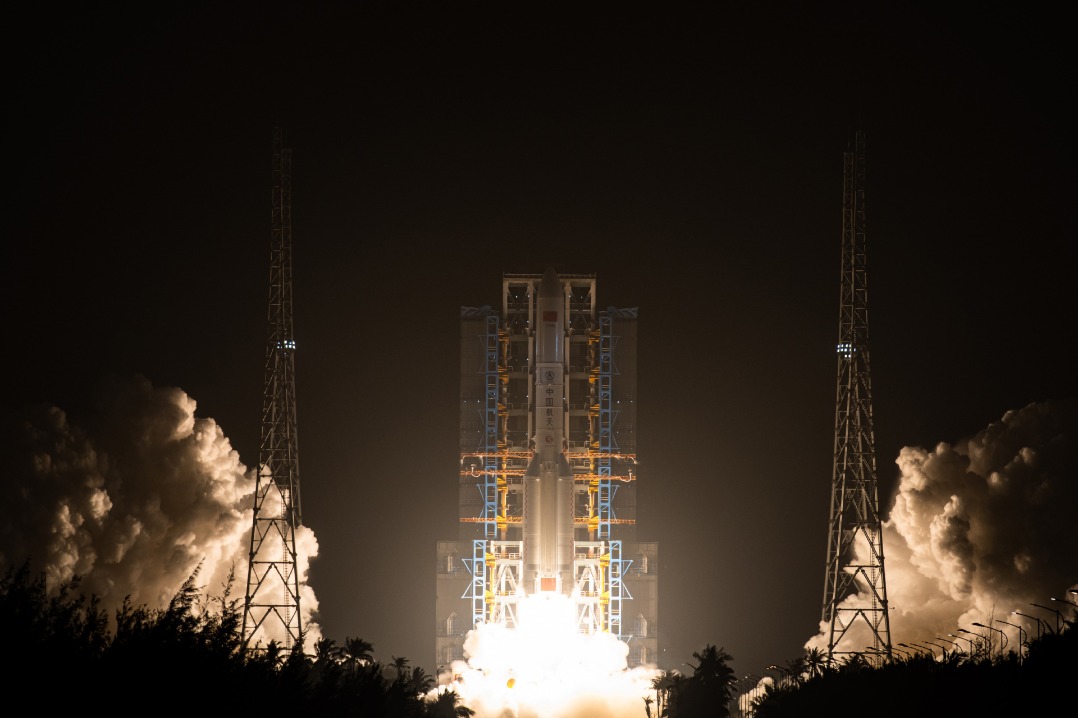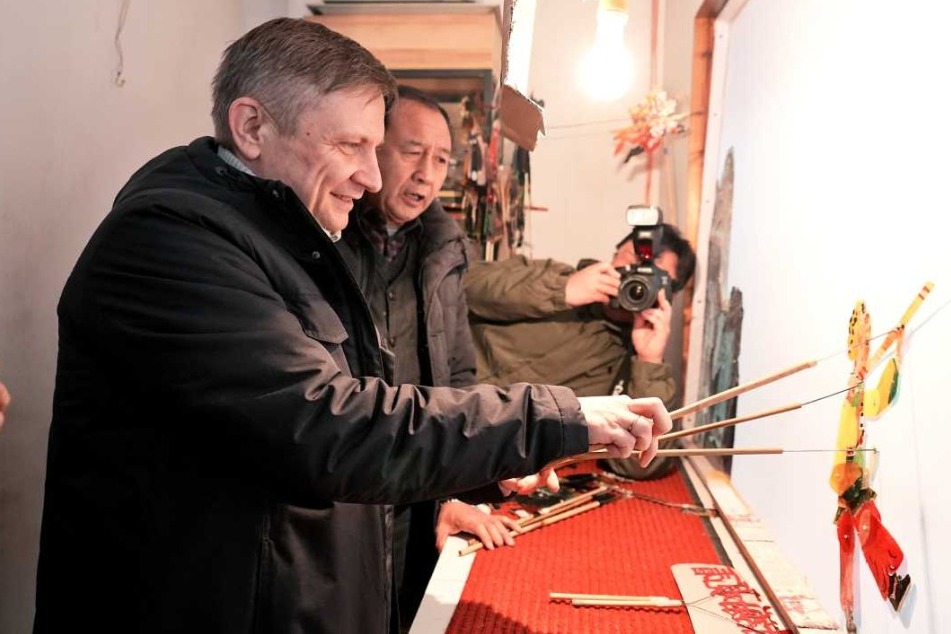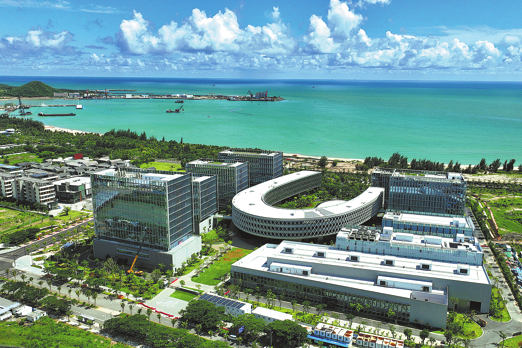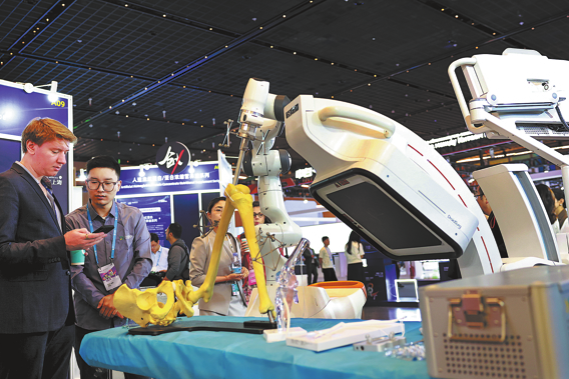V-Day parade a show of ability and will to defend peace, justice

China's V-Day military parade, scheduled for Sept 3 in Tian'anmen Square in Beijing, will be the first of its kind since China embarked on a new journey to advance Chinese modernization on all fronts.
A total of 45 formations and echelons will be involved in the grand parade. During the march-past, foot formations, battle flag formations, armament columns and flag-guarding aerial echelons will pass through the square in order, while fly-pasts are conducted overhead, according to the People's Liberation Army officials presiding over a news conference on Wednesday.
The parade will provide the world with a rare chance to see the achievements of the PLA's modernization endeavors in recent years, which have created a new system of services and arms. The four services are the Army, the Navy, the Air Force, and the Rocket Force, and the four arms are the Aerospace Force, the Cyberspace Force, the Information Support Force and the Joint Logistics Support Force.
The Army now accounts for less than 50 percent of the total active-duty personnel; noncombat units have been cut by nearly two-fourths; and the officer corps has been reduced by 30 percent — all to streamline the military and improve its combat capabilities, according to the news conference.
With a high level of informatization and intelligence, the weapons and equipment to be displayed are expected to demonstrate the strong adaptive capability of the Chinese armed forces in response to the transformative sci-tech developments and the evolution of war forms.
The parade will not only showcase a series of new-generation armaments but, more importantly, that under the leadership of the Party, the country and the armed forces have grown stronger and have the ability to win wars.
In 2014, the country designated Sept 3 as Victory Day of the Chinese People's War of Resistance Against Japanese Aggression (1931-45). The parade will showcase that the great spirit of the Chinese people in that war lives on.
The international community should recognize the fact that China made a major contribution to the victory in the World Anti-Fascist War by tying down and fighting the bulk of Japanese forces, and wiping out more than 1.5 million enemy troops.
In 1945, after 14 years of resistance, China achieved victory at a tremendous cost of 35 million military and civilian casualties, accounting for one-third of the total casualties suffered by all countries in World War II.
Japan surrendered on Sept 2,1945, signing the Instrument of Surrender to China and other Allied powers. China celebrated the victory the following day.
China's victory in the war 80 years ago was a triumph of justice over evil, light over darkness, and progress over reaction. China was the first country to fight against fascist aggression. With huge national sacrifice, the Chinese people held their ground in the World Anti-Fascist War's main theater in the East.
While demonstrating the Chinese military's strong ability to safeguard national sovereignty, security, and development interests, the parade is also a signal that the country upholds peace and will firmly defend international fairness and justice.
With the rise of the hegemony and unilateralism of some countries that seek to define the world order according to their will, the international community should stand united to jointly defend the postwar international order.
A country committed to peace and stability, China will work together with peace-loving countries and people across the world to uphold and advocate the correct historical view of World War II, resolutely safeguard the postwar order, firmly defend international fairness and justice, staunchly oppose all forms of hegemonism and power politics, and jointly promote the building of a community with a shared future for humanity.
Today's Top News
- Ukraine says latest peace talks with US, Europe 'productive'
- Economic stability a pillar of China's national security
- Xi taps China's deep wisdom for global good
- New rules aim for platforms' healthy growth
- Chinese web literature grows overseas
- Postgrad exam trend points to thoughtful approach
















